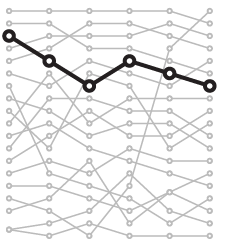Feelings at Work
Work is one part of our lives, but it occupies a big chunk, which warrants thinking about how we feel while we work. If your job makes you sad or stressed all the time, then maybe it’s worth thinking about a move. On the other hand, if your job makes you happy and helps you find meaning in the day-to-day, then you might be on the right track.
Are people happy at work? The American Time Use Survey asks people to score their happiness from 0 to 6, where 0 is not happy at all and 6 is very happy. Here’s how people answered:
Happiness Scores at Work
Out of workers who were asked, most gave happiness at least a score of 3.
Most people gave at least a score of 3 for happiness. Not bad. What about other feelings? ATUS also asks people to score stress, sadness, and meaningfulness. Below shows how people scored these feelings, which seems to swing towards positive.
Feelings at Work
Generally speaking, people tend to give higher scores to the positive feelings.
Most people, over 60%, scored sadness at 0, which is good. Over 30% of respondents gave a score of 6 to meaningfulness, which is also good.
However, not all jobs are created equal.
Some jobs are high stress with low meaning, whereas others are low stress with high meaning. There are jobs in between. Below shows a breakdown by occupation group, sorted by average score. Scroll over to see how each occupation group ranks against the rest.
Feelings by Occupation Group
Scroll over a group to see how it compares.
Legal occupations ranked high for stress and sadness and low for happiness and meaningfulness. That seems rough.
Going the other direction, those with jobs in personal care, such as hairdressers and manicurists, scored stress and sadness relatively low with happiness and meaningfulness relatively high. Similarly, construction scored low in stress and sadness — and high in happiness and meaningfulness. Seems like the way to go.
Notes
The data, via IPUMS, comes from the American Time Use Survey well-being module, which ran in 2010, 2012, 2013, and 2021. I analyzed the data in R and made the charts with D3.js.
Become a member. Support an independent site. Make great charts.
See What You GetFlowingData is made possible by supporting members. Since 2007, I, Nathan Yau, a real person, have been analyzing and visualizing data to help more people understand and appreciate it in their everyday lives.
If you liked this or want to make similar data things, please consider supporting this small corner of the internet. You get unlimited access to visualization courses, tutorials, and extra resources. Thanks. — Nathan



